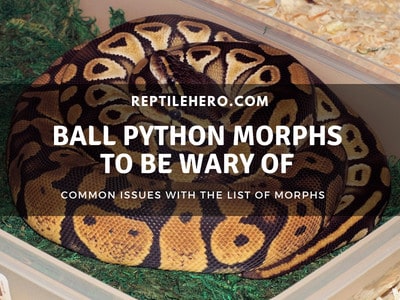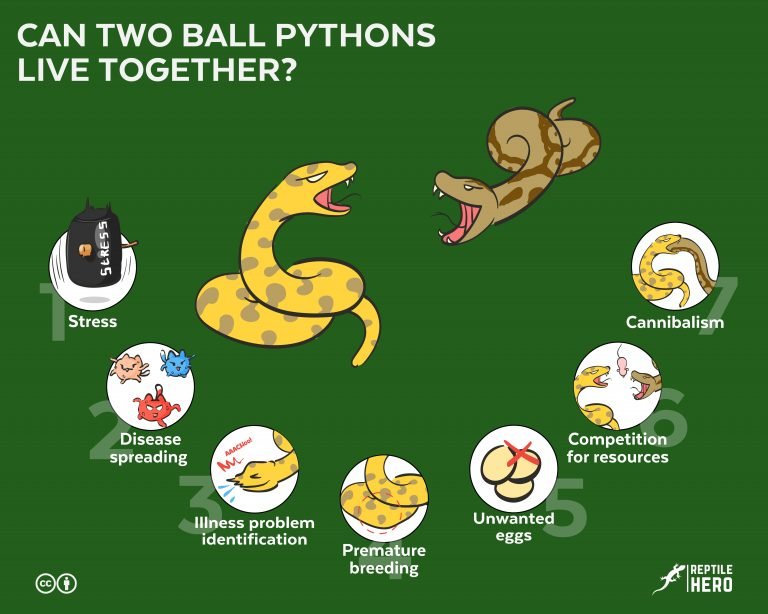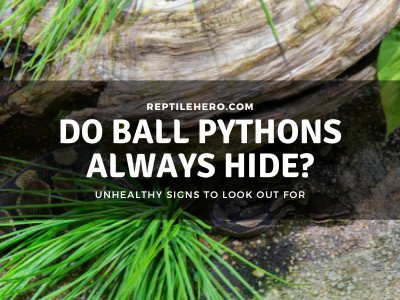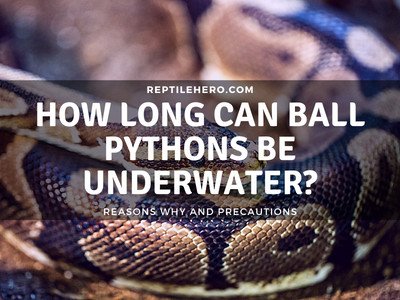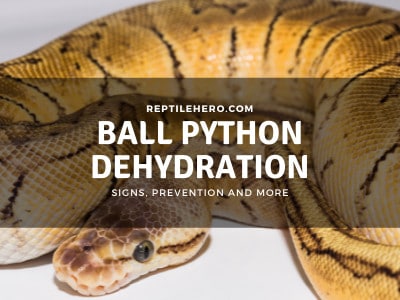Does Your Ball Python Like to Be Held?
Do ball pythons like to be held or do they just learn to tolerate it? One of the best things about keeping ball pythons is the possibility of interacting with your pet, but do they feel the same way?
Ball pythons can tolerate being held, but there is no proof that they like handling. Anecdotal evidence from keepers, however, state that ball pythons seemingly want to be held and touched. A ball python that tolerates handling will remain relaxed but curious throughout the interaction.
Ball pythons are one of the most popular reptiles in the pet-keeping community. Is being handleable one of its appeals? How and when should they be handled? Learn the answers to these and many more questions as you read until the end!
Do Ball Pythons Like Being Touched?
Ball pythons can tolerate being touched and held. However, they are sensitive to having vulnerable spots like the head and tail touched. Nevertheless, keepers believe that their ball pythons like being scratched and petted.
Before attempting to even scratch or pet a ball python, I recommend establishing first a successful bond through repetitive proper and gentle handling.
But if your ball python is already great at tolerating handling, then you can start softly rubbing some parts of its body like its head and chin.
Most of the time, a ball python will hide its head and be shocked when they first encounter being scratched. Others, like my ball python, Choco, can quickly grow accustomed to it and will not be head-shy when touched on the head.
Some keepers even cuddle with their ball pythons, with their snakes seemingly tolerant of such interactions. There is, however, no strong proof of whether or not the python likes this kind of attention definitively.
3 Signs That a Ball Python Enjoys Being Held
Although it is not proven ball pythons can enjoy being held, there are signs that they can tolerate such interactions:
- Relaxed movements
- Seeks out its owner
- Intuitive behaviors
In simple terms, if your ball python does not urgently flee away from you, it might be starting to get used to your presence.
Relaxed movements mean they tolerate your touch. You should not feel like they are constantly hiding or running from you. Ball pythons can even approach their owners on their own if they grow accustomed to handling.
A ball python that’s comfortable with you is likely to be quite curious as well. It can express intuitive behavior with actions like periscoping, staring, and flicking of tongue.
I am actually writing this while my 6-year-old ball python, Choco, is hanging around me in my work area. I bring him out at least once or twice a week for enrichment and I can see him constantly periscoping and curiously investigating his surroundings.
>>Want to learn more about enrichment? Check out our article 13 ways of providing enrichment to ball pythons
4 Things to Remember Before Handling a Ball Python
Before handling a ball python, there are a few things to keep in mind: 1) condition, 2) duration, 3) frequency, and 4) method.
1. Condition
Before handling a ball python, take note of its body condition and behavior. Ball pythons that are visibly stressed, shedding, and have just eaten should not be handled unless there’s an emergency.
If you see your ball python shedding or hiding tightly in a hide, I do not recommend forcing it out for handling. Instead, it should be given the choice to either approach you or not.
But, of course, you can take it out urgently in case of emergencies. For example, when you see the snake is tangled in objects, or if there are signs of sickness like lethargy, wheezing, and bubbling mouth, you’ll need to pick it up for inspection.
When you find your ball python showing signs of sickness, I highly advise you to bring it to a veterinarian as soon as possible for diagnosis and treatment. You’ll need to handle it and place it in a temporary container if you have to travel to the veterinary hospital.
2. Duration
Experts recommend to only handle ball pythons for 10–15 minutes. Take note of how long a ball python can tolerate handling to avoid unnecessary stress.
The given time above is only an average and it can become lower or higher depending on the snake’s temperament. Some keepers share that their ball python can even sit in their lap for about an hour!
In other words, the time you spend with your ball python for handling sessions will depend entirely on your ball python’s behavior. You’ll likely know whether or not it wants to continue being handled by how it behaves.
Handling should also not be too long due to the lack of a heat source outside the ball python’s enclosure. So if your room temperature is too low, I discourage handling your ball python for more than 10 minutes.
Once you see your snake getting too uncomfortable, skittish, or trying to escape, I recommend putting it back in its enclosure because it may be getting too stressed out.
3. Frequency
Ball pythons can be handled 1–3 times a week. However, there is no exact frequency a python can be held and it will ultimately depend on the behavior of the snake itself.
Some will say it is alright to handle a ball python everyday, but this will all depend on the desire of the snake to interact.
Tell-tale signs that your python wants to be held include looking out of its hide, calm movements, and staying relaxed when it sees you.
I know most ball python owners would like to interact with their scaly pets as much as possible because sometimes I do too. But we need to hold back as there are times when our snakes do not like to be disturbed or held.
4. Method
The most recommended method of handling ball pythons is choice-based. This allows the snake to decide whether or not to interact with its owner.
That said, I do not recommend forcing the snake out of its enclosure just for interactive handling. So the moment you get your ball python, choice-based handling should immediately be implemented.

For starters, you need to let your ball python familiarize itself with your presence first. Do this for a few days or even weeks before attempting to handle it. Ball pythons can even recognize specific scents so this step is important [1].
Then, once it starts to show tolerance for your presence, you can slowly introduce your hand and let the snake come to it with the door open.
Once it starts to slither to your arm, make sure to support it with both hands and handle the snake gently.
3 Times You Shouldn’t Handle Ball Pythons
A ball python should not be handled when it is: 1) newly fed, 2) still shedding, and 3) recently rehomed.
1. Newly Fed
If a ball python is newly fed, handling is not advisable. Keepers should wait at least 24–48 hours before handling a ball python after feeding to avoid regurgitation.
When a ball python has consumed a large meal, I recommend only handling it after leaving it alone for at least 2 days just to be safe.
Ball pythons can partially digest its meal in a day but it will take about 3–7 days to be fully digested [2]. This is why it’s best to let ball pythons digest their meal thoroughly first.
Otherwise, handling a newly-fed ball python will likely cause it to regurgitate its food!
Regurgitation of food is one of the most stressful occurrences for ball pythons. It can damage the throat of the python due to its digestive fluid, and a large regurgitated meal can even cause death due to suffocation.
Aside from that, such a negative experience while being handled may make a ball python dislike being touched or held by you if it learns to associate regurgitating with being held.
2. Still Shedding
Ball pythons that are about to shed should not be handled because they have worse eyesight and are in discomfort. Handling a shedding ball python can cause serious stress which can lead to appetite loss.
Shedding in ball pythons is important for their growth and replacement of old scales. But during ecdysis (the process of shedding), ball pythons will feel more vulnerable.
To put this into perspective, imagine that for almost 2 weeks you will gradually have worse eyesight while feeling itchy and uncomfortable all over your body.
Pythons feel that way while shedding which is why they become more defensive during this time. So you shouldn’t handle it if there is no urgent matter.
3. Recently Rehomed
In most cases, newly rehomed ball pythons are very anxious and scared which is why they should not be handled immediately. Only handle a rehomed ball python 1 day after its first meal in its new home.
Let the ball python settle in first for 2-3 days before offering it a meal depending on its last feeding from the breeder.
After that, you can start to implement choice-based handling and gradually get its trust to have a better handling experience for your snake.
For cleaning out the substrate and refilling its water bowl, I recommend sticking to spot cleaning for a few weeks and filling up the bowl while it’s inside the enclosure.
Then, once the ball python has started to get accustomed to handling, you can take it in and out of its enclosure for substrate and water replacement.
3 Tips for Handling a Ball Python
For handling ball pythons, it’s best to 1) start early, 2) practice target training, and 3) use the owner’s voice.
1. Start Early
Start choice-based handling while a ball python is still new and is settling into its new home. Newly-acquired ball pythons should be handled in the same frequency whether it is young or an adult.
For ball pythons of all ages, an average of 2–3 handling sessions per week is recommended.
Of course, owners can do more or fewer handling sessions depending on their snake’s willingness to be touched and interact.
Most keepers will say that adult ball pythons should be handled less but I disagree because we do not know what kind of life they had in their previous owner. They can be a snake that only interacts with its owner during feeding time.
Although harder, adult ball pythons can still be trained for association and tolerance with handling. It will take more time and precaution because bites from adult ball pythons are more painful than young ones.
2. Practice Target Training
Target training should ideally be implemented alongside choice-based handling. It allows ball pythons to differentiate between handling and feeding time.
I advise that all keepers do this training to prevent linear interactions in the future. This means that if a ball python did not differentiate between handling and feeding, there is a higher chance of you getting bit as a feeding response.
Target training is simple and can be done using a target with colors like blue, red, green, and other distinguishable hues. Then place the target behind the feeder during feeding time to let the snake associate the color as a time for feeding.
Many keepers have even tested using their target without food and it surprised them to see that the ball python in a feeding response even without a scent from a feeder.
3. Use the Owner’s Voice
Ball pythons can hear and sometimes recognize its owner’s voice. That is why it can help a ball python become more accustomed to handling when it hears a familiar sound.
Even though snakes have no outer and middle ear parts, their ears are sensitive to vibrations produced by sounds that they use to determine prey from a predator [3].
So in a sense, your ball python might recognize you through the difference in tone and intensity of your voice from other people.
You can also call your ball python’s name out during handling. This can result in the snake associating your unique “sound” when it is time for handling.
Is It Important to Handle Your Ball Python?
Ball pythons need to be handled to reduce their fear and anxiety when it comes to human interactions. This will also help keepers provide the best care in terms of maintenance due to the python being more comfortable towards its owner.
As ball python owners, it is our responsibility to give them the best care we can provide. This includes the time and effort we give to ensure that our scaly pets can become accustomed to and be more confident in interacting with us.
>>Learn more about a ball python’s emotions in our article can ball pythons show affection?
Handling ball pythons will not only serve as a fun interaction for keepers. More importantly, it will allow the snake to live more comfortably in the care of its owner.
Besides being bad for their own mental condition, it will also be harder for us keepers to care for a ball python if they stay very shy or defensive.
Imagine cleaning a smelly enclosure with a defensive ball python inside. Taking it in and out will be a hard time for you and the snake due to the stress.
Further Questions
Can ball pythons tell who their owner is?
Although not clear, ball pythons can recognize the scent, sound, and look of their owners. Even though they have poor vision and hearing, they can still associate indicators, such as tone and scent with people they often interact with.
Do ball pythons need attention?
Ball pythons are solitary creatures and do not need as much as attention like dogs and cats do. However, they should not be deprived of enrichment and interaction with their owners to have a better quality of life.
Can ball pythons remember past memories?
A ball python’s brain is similar in many ways to a mammalian brain, which means that they have the intellectual capacity to remember. They have been also proven to have the ability to associate certain colors, sounds, and signals to activities like handling and feeding.
Summary of Do Ball Pythons Like to be Held
Ball pythons can tolerate being held, however there is no strong evidence that proves they like it. Nevertheless, handling decreases stress and increases tolerance of the snake for its owner. A ball python that is relaxed, seeks out its owner, and curious are good signs of high handling tolerance.
Before handling a ball python, consider its condition and the duration, frequency, and method of handling. Keepers should not handle their ball pythons if it is newly fed, shedding, and recently rehomed. Although it can be done if there are emergencies.
There are 3 more additional tips for handling, namely: starting early, target training, and using the owner’s voice. Similar to handling, ball pythons can also tolerate being touched, petted, scratched, and cuddled.

